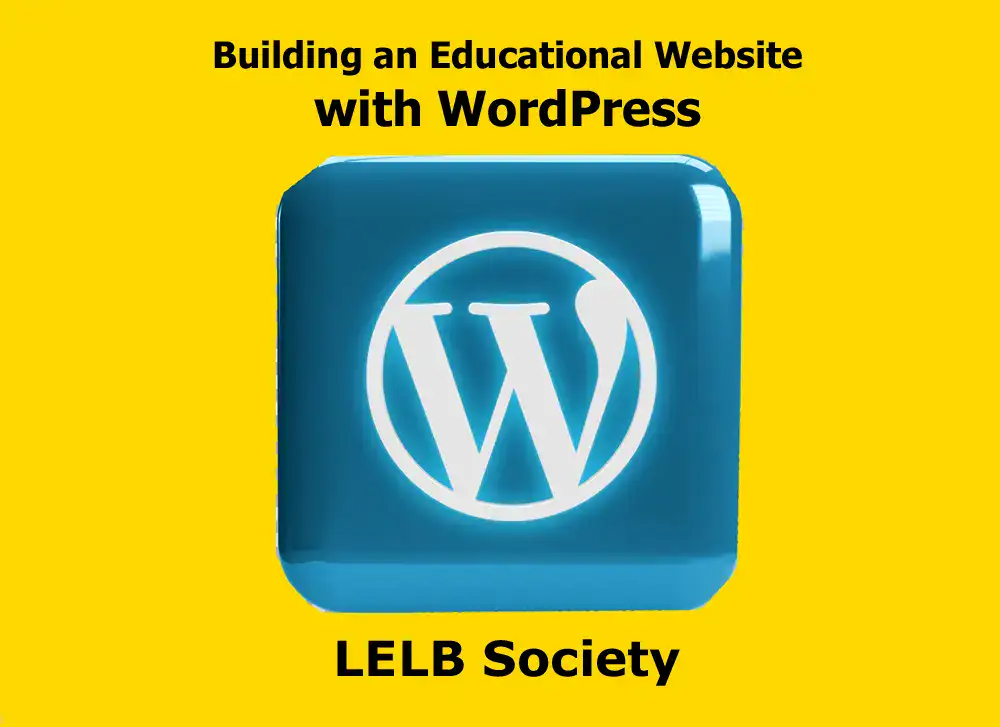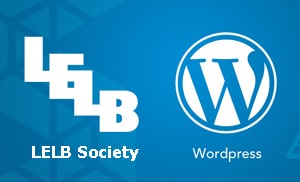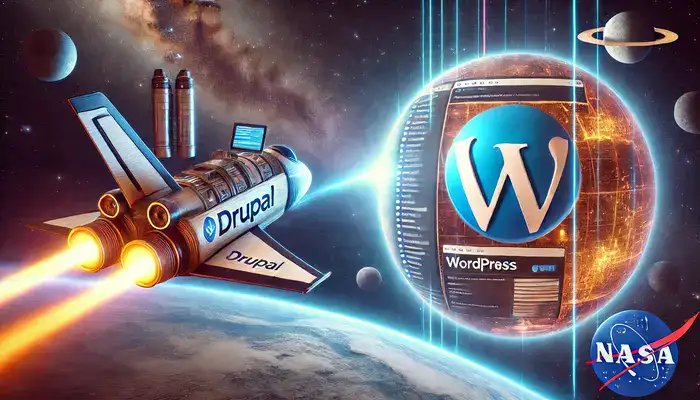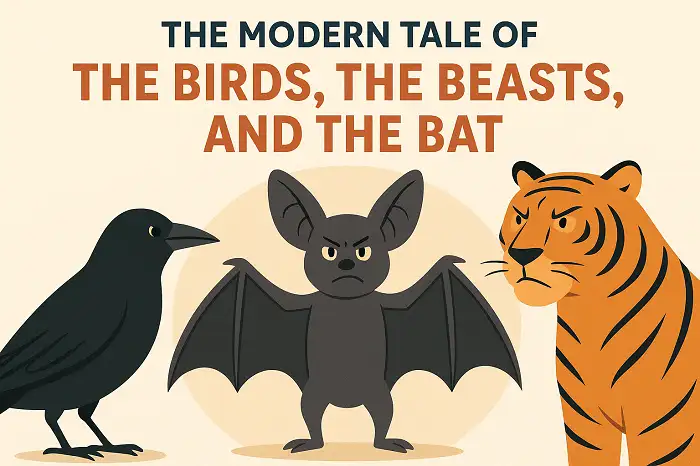Table of Contents
- Video of NASA’s Move from Drupal to WordPress
- The Origins and Evolution of NASA.gov: From Drupal to WordPress
- The Scale of NASA’s Transition: Migrating Thousands of Pages to WordPress
- The Rise of WordPress: From Open-Source Beginnings to Global Dominance
- Showcasing Top 10 Websites Created with WordPress
- Is WordPress Better than Drupal?
- Is Migrating Your Website from Drupal to WordPress a Breeze?
- Dr. Mohammad Hossein Hariri Asl’s Journey to WordPress with LELB Society
NASA successfully migrated its flagship website from Drupal to WordPress on September 28, 2023. This transition was part of a broader web modernization effort aimed at improving content management and user experience. The migration involved moving a vast amount of content, rethinking navigation, and implementing a new design system known as the Horizon Design System. The project took approximately 18 months, including a year of user experience design and evaluation of various content management systems.

The switch to WordPress allowed NASA to leverage the platform’s flexibility and scalability, enabling the organization to better manage its extensive web presence. The new WordPress site, which went live in the early hours of September 28, 2023, was designed to handle high traffic loads efficiently, as demonstrated during the solar eclipse earlier this year when the site managed one billion requests within a four-and-a-half-hour span. This migration showcases WordPress’s capability to support large-scale, enterprise-level projects effectively.
Video of NASA’s Move from Drupal to WordPress
The Origins and Evolution of NASA.gov: From Drupal to WordPress
NASA’s official website, NASA.gov, was first published on February 14, 1995. This marked the beginning of NASA’s online presence, providing the public with access to a wealth of information about its missions, research, and discoveries. The website has since evolved to become a vital resource for space enthusiasts, educators, and researchers worldwide.

NASA.gov was created in 1995, but it wasn’t initially built on Drupal. The website has gone through several iterations and technology upgrades over the years. Drupal, which was released in 2001, was adopted by NASA later on as the platform’s capabilities grew and became more suitable for managing their extensive content, including text, images, videos, and interactive features. Drupal’s robust architecture and flexibility made it an ideal choice for NASA’s complex and dynamic web presence. However, in September 2023, NASA transitioned its website to WordPress, a move aimed at enhancing content management and improving user experience.
The Scale of NASA’s Transition: Migrating Thousands of Pages to WordPress

NASA’s transition from Drupal to WordPress was a massive undertaking that involved migrating 68,698 pages and adding 3,023 landing pages. The project required moving a vast amount of content, including text, images, and other media, to the new WordPress platform. This process was meticulously planned and executed over an 18-month period, ensuring that all content was accurately transferred and properly formatted within the new system.

Additionally, the migration involved rethinking navigation and content structure to improve user experience. URLs were carefully handled, with some being combined, changed, or redirected to maintain continuity and accessibility. The successful migration showcases WordPress’s capability to handle large-scale content management projects efficiently, ensuring that NASA’s extensive web presence remained robust and user-friendly.
The Rise of WordPress: From Open-Source Beginnings to Global Dominance
WordPress was born out of a desire for an elegant, well-architectured personal publishing system. It was initially released on May 27, 2003, by its founders, Matt Mullenweg and Mike Little, as a fork of the b2/cafelog blogging software. Since its inception, WordPress has evolved into a full-fledged content management system (CMS) that powers various types of websites, from simple blogs to complex e-commerce sites. As an open-source platform, WordPress benefits from a large community of developers and users who contribute to its continuous improvement, making it a versatile and robust choice for website creation.

Today, WordPress is the most popular CMS in the world, powering approximately 43% of all websites globally. This impressive market share is a testament to its flexibility, ease of use, and extensive plugin ecosystem, which allows users to customize their websites to meet their specific needs. The platform’s widespread adoption can also be attributed to its active community, which provides a wealth of resources, including themes, plugins, and support forums, to help users create and maintain their websites efficiently.
Showcasing Top 10 Websites Created with WordPress

Here are some of the most popular websites built using WordPress:
- TechCrunch: A leading technology news website that provides the latest updates and insights on the tech industry.
- The New York Times: One of the most renowned news outlets, offering a vast array of articles and multimedia content.
- Sony Music: The official site for Sony Music, showcasing artists, albums, and music releases.
- Time Magazine: The online version of the iconic magazine, featuring news, articles, and multimedia content.
- Spotify: The music streaming giant’s website, providing access to millions of songs and playlists.
- The Walt Disney Company: The official site for Disney, offering information on movies, TV shows, and theme parks.
- Harvard University: The university’s official website, providing information on admissions, research, and campus life.
- The Rolling Stones: The official site for the legendary rock band, featuring tour dates, music, and merchandise.
- TED Blog: The blog for TED Talks, showcasing inspiring talks, presentations, and ideas from thought leaders around the world.
- Caesarstone: The website for Caesarstone, a leading manufacturer of quartz surfaces, showcasing their products and design inspirations.
These examples highlight the versatility and power of WordPress in creating high-traffic, feature-rich websites across various industries.
Is WordPress Better than Drupal?

Drawing a conclusion on whether WordPress is categorically better than Drupal based solely on NASA’s transition requires a nuanced approach. NASA’s switch to WordPress in September 2023 highlights several strengths of the platform, such as its flexibility, scalability, and capability to handle high traffic loads efficiently. WordPress’s user-friendly interface and vast plugin ecosystem likely made it easier for NASA to manage and update its extensive content library, which includes various datasets, archives, and specialized sites. The successful handling of one billion requests during a solar eclipse event further underscores WordPress’s robustness in handling large-scale, high-traffic scenarios.
However, it’s important to note that Drupal also has its own set of advantages, particularly in terms of security and customizability. Drupal’s architecture is highly flexible and well-suited for complex and high-security sites, which is why it has been the platform of choice for many government and enterprise websites. Therefore, while NASA’s transition to WordPress showcases the strengths of the platform, it doesn’t necessarily mean that WordPress is universally better than Drupal. The best choice between the two often depends on the specific needs and priorities of the organization. Each platform has its own merits, and the decision should be based on a comprehensive evaluation of those factors.
Is Migrating Your Website from Drupal to WordPress a Breeze?

Migrating a website from Drupal to WordPress can be a complex process, but it is certainly feasible with proper planning and execution. One of the key considerations is the structural differences between the two content management systems (CMS). Drupal’s architecture is highly flexible and customizable, which may require careful mapping of content types and fields to their corresponding elements in WordPress. Tools like the FG Drupal to WordPress plugin can facilitate this process by automating the migration of content, users, and media. However, manual intervention may still be needed to ensure that custom features, themes, and modules are accurately replicated in the new environment.
Another factor to consider is the scale of your website. Small to medium-sized websites with straightforward content structures can often be migrated relatively smoothly. In contrast, larger sites with extensive databases and custom functionalities may require more time and expertise. It’s also crucial to perform thorough testing to identify and resolve any issues post-migration. While the process may present some challenges, the benefits of migrating to WordPress—including its user-friendly interface, vast plugin ecosystem, and widespread support—can make the effort worthwhile for many website owners. Proper planning, the right tools, and professional assistance can significantly streamline the migration journey.
Dr. Mohammad Hossein Hariri Asl’s Journey to WordPress with LELB Society

Dr. Mohammad Hossein Hariri Asl embarked on his mission to revolutionize language learning in 2010 by launching educational websites under the brand LELB Society. Initially, he explored various content management systems, including Drupal, Joomla, and Blogger, across different domains. These platforms allowed him to reach a diverse audience and experiment with various features and functionalities. However, as his educational endeavors expanded and the demand for more efficient management grew, Dr. Hariri Asl began to seek a more robust and flexible solution.

In 2015, Dr. Hariri Asl decided that WordPress was the ideal platform for his educational website. The decision marked a significant turning point for LELB Society. WordPress offered a user-friendly interface, extensive plugin ecosystem, and unparalleled customization options that perfectly aligned with his vision for an immersive learning experience. Since making the switch, Dr. Hariri Asl has been immensely satisfied with the platform, finding it far superior to the other CMSs he previously used. The transition to WordPress has enabled LELB Society to thrive, providing learners with a seamless and engaging online environment to master new languages.

LELB Society is a distinguished bilingual academy dedicated to fostering language proficiency in both English and Persian. By offering an extensive range of lessons and resources, the academy aims to create a dynamic and immersive learning environment for students of all ages and skill levels. Through the use of innovative teaching methods, including flipped learning and interactive discussions, LELB Society ensures that learners receive personalized attention and comprehensive support. The academy’s commitment to bilingual education helps students achieve fluency, cultural understanding, and academic success, making it an invaluable resource for language learners worldwide.



